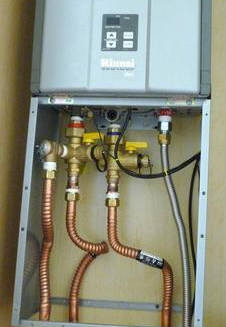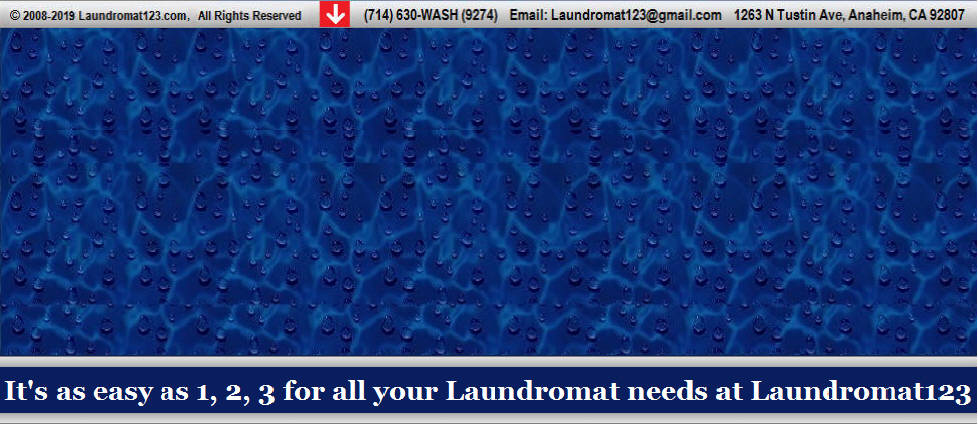1. KEY CONTROL
During the transfer of ownership a bag or box of keys and several rings of keys are given to you.
Forget what the old owner did with his keys and follow this advice. Separate your keys into three
types. The first is the collection keys which open the coin boxes, soap machine and changers.
The second are the service keys that open the service locks on your equipment. The third is the
door and miscellaneous keys that open doors, ladder padlocks, electric panel locks and other
items.
Check to make sure you have more than one of every key. Put the extra keys into a box and set
them aside to take home with you. Now make up a ring of the service keys. These you will carry
with you when you are in your Laundromat. Second, make up a ring of the collection keys which you will not carry with you unless you are going to collect. Third, make up a ring with the various other access keys. Finally, make up a ring of keys to open the bill changer, the entrance and the back door. Attach this ring to the key ring you have for your house and automobile. These are the keys you will take home in your pocket.
Many Laundromat owners store the other sets of keys in a safe or their bill changer. If you keep these key rings in your changer, you will only carry them when they are needed. This reduces the chance of losing all the keys at once. If you store your keys in this manner, make sure your changer is secure and alarmed.
If you buy an existing Laundromat, be sure and change out all the coin boxes and door locks. The service keys are not normally required to be changed. When you buy new coin boxes, do not key all the coin boxes alike. The loss of one key gives access to all of your machines. Key them alike in groups of ten or twenty or buy coin boxes for each type of washer. Example: all your dryers are on one key, top load washers on another, 30-LB washers on another, 40-LB washers on another and so forth.
When you buy your new locks make sure they are not tubular or round keys. Select a high security lock that is resistant to "picking" and is difficult to duplicate when the key is taken to a regular locksmith.
2. SOME WANT IT FOR NOTHING
Be aware of those who would like to take your money or your services for free. There are some washers and
dryers that can be beaten by "the hook." This is a metal bra wire pushed into your coin drop mechanism to make
your coin mechanism think an actual coin has been inserted.
Another method of stealing washes from you is to use a service key to open the service panel and trigger a free
wash. A relative or friend of a service person with a spare service key can start your machines for free. The
solution is to change the service locks to a non-standard key. Rubber gloves and "Q-tips" are used to cheat older
coin slides. A sign that you have someone using rubber surgical gloves (the quarters are inserted into the fingers
and then placed into the slots) is finding bits and pieces of rubber (from the surgical gloves) in your coin boxes.
Replace the slides if this becomes a regular finding.
If you have front load washers with a plastic indicator dial cover showing the progress of the wash cycle inspect them carefully. The plastic indicator dial can be connected directed to your mechanical timer. By drilling a tiny hole, it is possible to use a paperclip to push the cycle indicator. This starts the machine. Sometimes the clear indicator covers are missing or can be removed with your hand. If you discover any of these conditions, contact your distributor to purchase a heavy Plexiglas cover for your indicator dials.
Collections should be done on busy days when your Laundromat is full and there are a lot of witnesses. The second best time to collect is in the early morning before your store opens. Most thieves are sleeping at 6:00 A.M.
3. DO BASIC REPAIRS YOURSELF
You have to learn to do some basic maintenance and repairs yourself. Let's start with a few simple ones that you can do without too much skill or risk of damage to your machines.
Water Valve Filters
You may find that your washers are filling slowly. First check to see if your hose bib is turned completely on for this machine. On a prior service call the valve may not have been turned completely on. If this isn't the problem, turn the water off and remove the hose from the hose bib. Look for the screen or filter to see if it was become clogged with sediment. If the screen is clogged, replace it with a new screen, available from your parts house that is attached to the hose washer. Reattach the hose. Now remove the hose from the water valve and remove the filter. You can do this with a small flathead screwdriver. Install a new hose washer (no screen on this one) and reattach the hose to the water valve. There is no need to filter both the hose and the water valve. The one filter screen is enough. Be aware that the screens come in different types. The tighter the mesh on the screen the more sediment is trapped but the downside is the more often you have to replace the screens. Without any screen, sediment can cause possible damage to the water valve. If your water valve will not shut off you've got a clogged water valve. Overflowing top load washers and front load washers that continue to run during the wash cycle (you can hear the water coming into the machine), are indicators that you have a damaged water valve.
Vending Machine Mechanisms
Keeping your vending machines clean from dirt and soap powder is part of ensuring that you have years of trouble-free operation. If you have a plastic type coin mechanism soak it in warm sudsy water, checking the coin path for dirt buildup. Scrub the coin drop with an old toothbrush. Do not soak metal drop mechanisms. Just wipe with a hot damp cloth and scrub any buildup with an old toothbrush.
Coin Slides & Coin Boxes
Dirt and grime can build up inside your coin slides. Take out a few and wipe them clean. Spray a little dry silicone to smooth the slide movement. Never use any type of oil or spray as oils will attract dirt and dust. You can also clean your coin boxes with the above technique.
Soap Machines
Soap residue can clog the operation of your soap machine. Clean all the columns that come in contact with the soap boxes with a hot damp cloth and allow them to dry. In particular, clean the slide the allows the soap boxes to slide to the customer. Clean this surface and coat with dry silicone spray or wax to allow the boxes travel smoothly.
Tank less Water Heater Coils (advanced)
The build-up of lime or mineral scale during the normal use of your tank less water heaters will
decrease the operating efficiency of the heating coils. How often you need to clean the heating
coils will depend on your water condition. If your water is known to be hard or to have a high
mineral content, a preventative maintenance schedule to clean your coils every six months is
recommended.
Please note in the picture on the right the flexible copper connections. Some plumbers love to
use solid copper to the water heaters, making the following procedure difficult. Your shutoff
valves (intake and outlet) should be plumbed to the actual heater by flexible copper lines. Keep
this in mind when you have your water heater replaced in the future. The flexible lines make
deliming a much easier process. Here are the three steps to clean coils:
1. In a large plastic tub, mix deliming solution with water according to the manufacturer’s
recommendations. You can use white vinegar or a commercial deliming solution. In the old days,
we used muriatic acid (available from a pool supply company) and an acid proof pump. Today the
quality and thickness of the coils is such that heaters must be properly treated to protect pump,
gaskets and the copper coil. Connect a submersible pump to a hose. An acid resistant submersible
pump will set you back about $50.00 to $100.00. The plastic tub about $10.00. Check to make sure
you have the adapters to connect to the water heater inlet and outlets.
2. Turn off your water supply. Disconnect the hose at the inlet of the water heater. Connect your hose to the connection at the heater inlet. Tighten the hose. Remove the discharge end of the heater to another hose. Put the unattached end into the five gallon container.
3. Turn on the pump and circulate the solution through the coil until the discharge solution stops foaming. When foaming stops, the coil will be clean. It should not take more than one hour for this process; a little longer if you're using white vinegar.






HOW TO CONTROL YOUR COSTS & LOSSES



